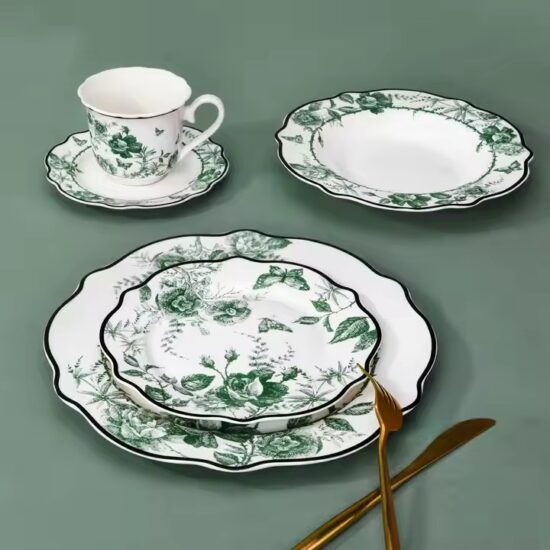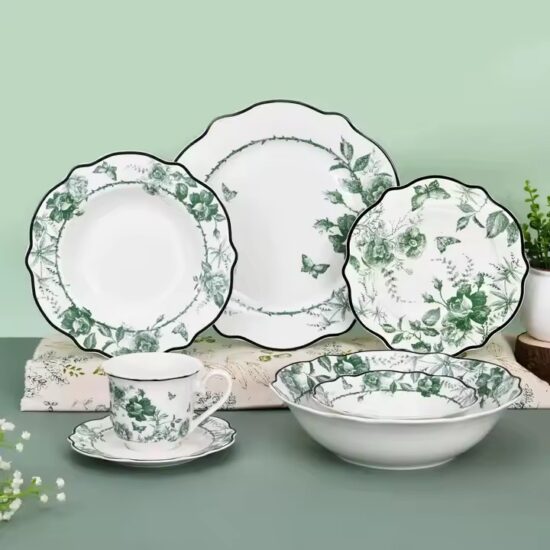bob@nbdho.com
Detailed Process of Making Ceramic Bowls: From Clay to Table
Detailed Process of Making Ceramic Bowls: From Clay to Table
Introduction
Ceramic bowls are a staple in kitchens, restaurants, and homes worldwide. But have you ever wondered how they are made? As a professional ceramic bowl manufacturer and supplier, we take you behind the scenes to explore the full production journey—from raw materials to the beautiful, durable bowls on your table.
1. Raw Material Selection
The process begins with choosing high-quality raw clay. Common materials include kaolin, ball clay, feldspar, and quartz. The right composition ensures strength, durability, and the perfect surface for glazing.
Key Notes:
-
Kaolin adds whiteness and smoothness.
-
Feldspar improves melting during firing.
-
Consistent particle size is crucial for shaping.
2. Clay Preparation
The raw materials are mixed with water to form a slurry called slip. The mixture is then filtered, de-aired, and aged for consistency.
Steps Involved:
-
Mixing: Combine dry materials with water.
-
Sieving: Remove impurities and ensure uniform texture.
-
Aging: Let the mixture rest to improve plasticity.
3. Shaping/Forming the Bowl
There are several techniques to shape ceramic bowls:
-
Wheel Throwing: Traditional method used for small-batch or artisan bowls.
-
Slip Casting: Ideal for complex shapes and mass production.
-
Press Molding: Common in factory production for uniform results.
After shaping, the bowls are dried to a leather-hard stage for further refinement.
4. Trimming and Detailing
Once semi-dried, bowls are trimmed to define their shape, base, and smooth edges. Handles or decorative elements can also be added at this stage.
Why it’s important:
-
Enhances bowl symmetry and usability.
-
Prepares the piece for even glazing and firing.
5. Bisque Firing (First Firing)
The bowls are fired in a kiln at about 900–1000°C (1650–1830°F) to remove moisture and harden the form. This is known as bisque ware.
Purpose:
-
Makes the ceramic porous and ready for glazing.
-
Reduces risk of cracks or warping during glazing.
6. Glazing
Glaze is applied to add color, texture, and a waterproof layer. It can be applied by:
-
Dipping
-
Brushing
-
Spraying
The glaze composition and application method affect the final look and feel of the bowl.
7. Glaze Firing (Second Firing)
After glazing, the bowls go through a second firing at a higher temperature—usually around 1200–1300°C (2190–2370°F).
Outcome:
-
Glaze vitrifies (melts and fuses), forming a glass-like surface.
-
The bowl gains its final strength, color, and finish.
8. Quality Inspection
Each ceramic bowl is inspected for:
-
Cracks or warping
-
Glaze imperfections
-
Consistency in size and weight
-
Food safety and lead-free compliance
Only flawless pieces move on to packaging.
9. Packaging and Shipping
Bowls are carefully packed to avoid damage in transit. We use:
-
Foam inserts or cardboard dividers
-
Eco-friendly wrapping materials
-
Drop-tested cartons for international shipping
Conclusion
Making ceramic bowls is both an art and a science. Each stage—from clay selection to the final firing—requires precision and experience. As a trusted manufacturer and supplier, we ensure every bowl meets high-quality standards, whether for home use, restaurants, or custom branding.
If you’re looking for reliable ceramic bowl wholesale, OEM/ODM services, or custom solutions—contact us today for more information.

